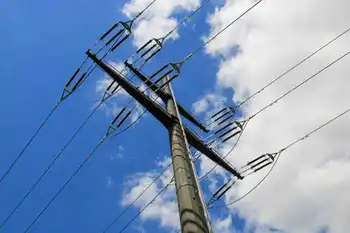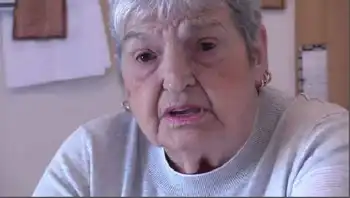Coal an easier target than oil sands in Alberta
By The Star
Protective Relay Training - Basic
Our customized live online or in‑person group training can be delivered to your staff at your location.

- Live Online
- 12 hours Instructor-led
- Group Training Available
ItÂ’s a view shared by Michael Ivanco, a nuclear scientist at Candu Energy and lecturer at the University of Toronto. In January, while preparing for one of his university talks, Ivanco was surprised to learn that since Premier Dalton McGuinty came to power, greenhouse-gas emissions from electricity generation have dropped by two thirds.
He knew emissions were going down, but not by that much.
In 2003, the province generated 145.2 terawatt-hours of electricity that produced 39.9 megatonnes of CO2-equivalent greenhouse gases, according to data from Environment Canada. By 2009 those emissions had dropped to 15 megatonnes.
In 2011 even more electricity was generated – about 150 terawatt-hours – but Ivanco calculated that emissions will come in at around 13.5 megatonnes.
That would be a 26.4-megatonne drop in eight years, even though annual electricity generation has increased by more than 3 per cent. A spokesperson from the Ministry of Energy verified the figure, and said the drop could in fact come in closer to 30 megatonnes.
“The coal ‘dragon’ has been slain in Ontario but no one seems to have noticed,” said Ivanco. “In terms of impact on the environment this is the equivalent of changing all of the cars in Ontario into electric vehicles.”
Indeed, in 2003 coal represented about 21 per cent of supply. This fell to slightly less than 3 per cent in 2011. It seems natural gas – with half the emissions of coal – along with help from wind, nuclear, and solar have been filling the gap left behind by our coal phase out.
It should also be noted that Ontario imports of coal power have also plunged over those eight years. The province, in fact, has gone from net importer of dirty power to net exporter of clean power.
LetÂ’s contrast this with Alberta. In 2009, which are the latest figures from Environment Canada, the western province generated 75 per cent of its electricity with coal. This contributed to the bulk of its electricity-sector emissions, which stood at 48 megatonnes that year.
Add natural gas to the mix and fossil fuels accounted for 93 per cent of power generation in the province. Clearly, Alberta could go a long way to reducing its reliance on coal and, by doing so, significantly lower its emissions.
So hereÂ’s a question: If Ontario can in eight years reduce CO2 emissions from its electricity sector by nearly 30 megatonnes, why canÂ’t a more coal-dependent Alberta do the same?
The province has some of the countryÂ’s best wind resources. It gets the most solar exposure of any place in Canada. Along with B.C., it has tremendous potential to generate electricity 24 hours a day from its scattered geothermal resources. ThereÂ’s also the option of using more natural gas and less coal as a way to reduce overall emissions.
The fact that Alberta isnÂ’t going down this path, at least not in any serious way, is bewildering if you consider the amount of heat itÂ’s taking for the environmental footprint of its oil sands.
Oil sands development, like Alberta’s electricity system, is a huge emitter of greenhouse gases and a lightning bolt of international criticism. The in-situ extraction and mining of bitumen, as well as the upgrading of bitumen into synthetic crude oil, resulted in 49 megatonnes of emissions in 2010 – roughly equivalent to what today comes out of the province’s electricity sector.
By 2020, however, those oil sands-related emissions are expected to skyrocket to an unsustainable 92 megatonnes, according to an emissions trending report released last July by Environment Canada.
HereÂ’s a thought: If Alberta wants a free ride on oil-sands development, then why not commit to at least reducing electricity emissions by one megatonne for every megatonne of new emissions expected to come from oil-sands growth?
The approach would still be a strong job creator for Alberta. It would empower communities to take action. The province would diversify its economy and could leverage local expertise. And air pollution would fall dramatically, helping to ease long-term healthcare costs.
This is not to say the province shouldn’t continue to reduce the emissions intensity of oil sands development. But by tackling electricity-sector emissions in an aggressive way and right away, it could shed its current international image – one that reflects on all of Canada—of environmental bogeyman.
Some will argue that heading in this direction would cause electricity rates to soar. ThatÂ’s far from certain.
Alberta has generally enjoyed low electricity prices, but its open, deregulated market is also increasingly volatile. The need for large investments in new generation coal-based or otherwise and transmission infrastructure upgrades will put upward pressure on prices.
This winter was a case in point. All-in costs energy, distribution, transmission and other fees for Alberta consumers on regulated rates ranged from 18 cents to 20 cents a kilowatt-hour between December and February, much higher than what we pay in Ontario.
Those on five-year fixed plans still paid between 13 and 15 cents. My January bill from Toronto Hydro, by comparison, worked out to about 15 cents per kilowatt-hour.
So coal, it seems, isnÂ’t always the cheaper option. Over the coming years, with grand talk of capturing coal emissions and burying it underground, it promises to become less so.
ItÂ’s one of many good reasons for Albertans to start breaking their addiction to coal.











